What is the value of a National Monument? Just look at Grand Teton National Park
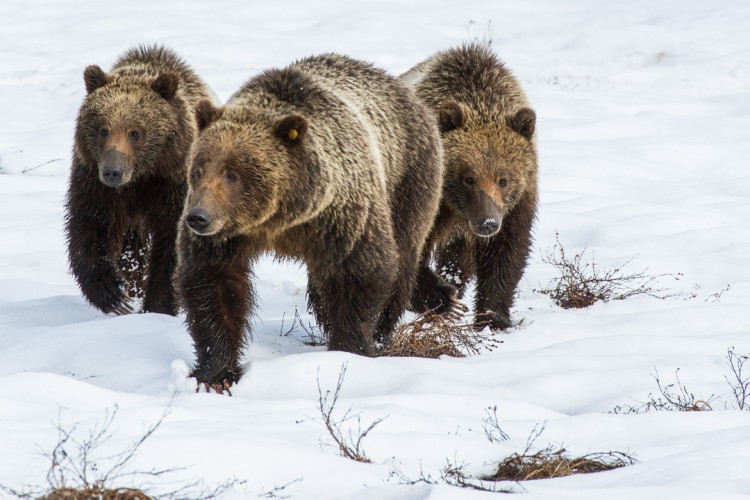

It’s a cool June morning beneath the jagged 12,326’ summit of Teewinot Mountain in Grand Teton National Park. I’m with clients watching cow elk and pronghorn antelope in the still morning air. A female pronghorn shifts in the distance and, can it be? Yes! Hidden beneath her legs emerges a tiny fawn, walking unsteadily in its new world.
The sagebrush flats of Grand Teton National Park are a safe haven for pronghorn like these, but also one of the largest remaining herds of wild bison, critical elk migration routes, and a plethora of habitat for other wildlife that call the Greater Yellowstone Ecosystem home. But it wasn’t always this way; where we are now standing was once private land at risk of development.
When it was founded in 1929, Grand Teton was little more than a rock and ice park: its boundaries encompassed a portion of the Teton Range extending to the edge of several of the lakes at their base, while the land in the valley bottom and along the Snake river remained unprotected, including tens of thousands of acres of private ranchland. Thus the park protected the iconic peaks we still love today, but not much of the critical wildlife habitat.
To protect the scenic vistas, habitat, and migration corridors of the Jackson Hole Valley philanthropist John D. Rockefeller Jr. began purchasing ranches from willing sellers, eventually amassing 35,000 acres of land, including the parcel where we watched the pronghorn fawn. Unfortunately, his offer to donate the land was met with resistance from locals with a different vision of the valley. Efforts to protect the valley stalled until 1943, when FDR used the Antiquities Act to designate Jackson Hole National Monument, combining Rockefeller’s land donation with over 200,000 acres of National Forest Land.
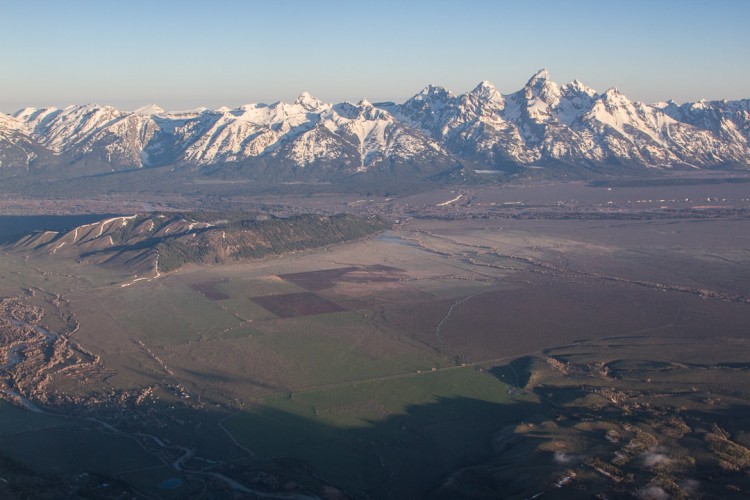
The valley was protected, but to remain so Jackson Hole National Monument would have to survive an attempt by Congress to rescind it. Ranchers, worried about grazing access (which they still have today) protested. Even the Forest Service opposed the park, seeking instead to log the Northern Range of the Tetons across Jackson Lake while proposing leasing upwards of 400 homes along its shore. Thanks to the veto power of FDR the monument did survive, and in 1950, was added what we now know as Grand Teton National Park. What could have been hotels and houses marring one of the most spectacular landscapes in the country was now protected wildlife habitat.
Opponents of Jackson Hole National Monument later recognized the importance of protecting more acreage than less. Local rancher Clifford Hansen, known for organizing an armed protest ride across the monument after its establishment in 1943, went on to become governor of Wyoming and later a U.S. Senator. Upon reflecting on the battle over the monument and Grand Teton National Park, Hansen remarked that it was an asset to Wyoming, and he appreciated why park advocates “felt that as much land as was taken in should be taken in.”
Our pronghorn antelope know none of this, they are simply tracing the steps of their ancestors, along a 6000 year old migration route known as the Path of the Pronghorn. Throughout the summer they thrive in the sagebrush flats of what used to be Jackson Hole National Monument, gaining precious fat reserves in preparation of the coming winter. In the fall, 300-400 of them stage near the famous Moulton Barn on Mormon Row, preparing to head south through the Gros Ventre Mountains onto winter range outside of the park. With any luck, the pronghorn fawn we found this spring will have grown into a speedy juvenile by the time the migration starts in the fall, joining an ancient legacy, now protected.
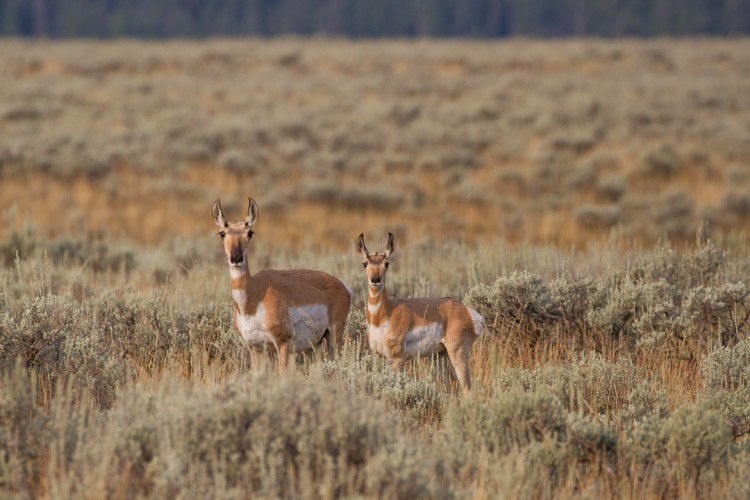
Pronghorn aren’t the only animals who migrate through Grand Teton National Park. Each spring, close to 9000 elk exit winter range on the National Elk Refuge just north of the town of Jackson. Most head north, crossing the icy Gros Ventre River and entering the Park. They move into an area known as Antelope Flats, hay fields formerly cultivated by early homesteaders beginning in the 1880’s. The elk travel across the shallow snow, over tufts of dried grass and silvery green sagebrush, led by a dominant matriarch. She knows this route well and travels it faithfully every year, leading her relatives onward.
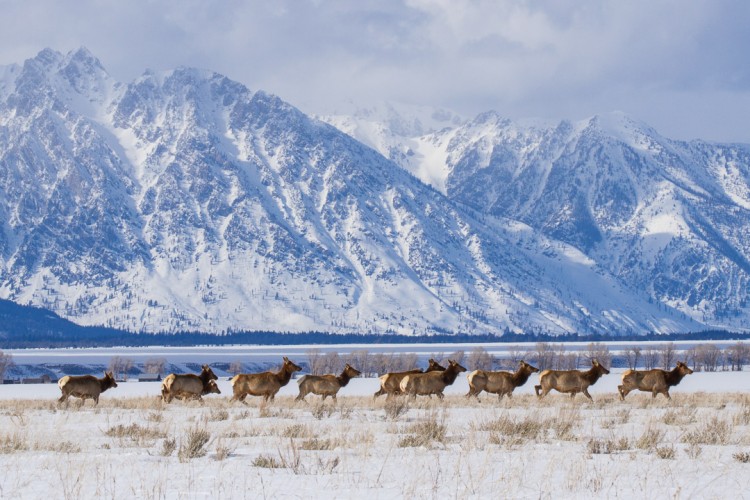
Some herds leaving the Refuge will traverse the entire length of Grand Teton National Park, entering the Teton Wilderness, and then pass into Yellowstone National Park, an amazing journey of over 60 miles. Others will summer along the base of the Teton Range, emerging from the forest at dawn and dusk to graze alongside pronghorn antelope in the sagebrush flats which were initially protected by Jackson Hole National Monument.
Many will head east, out of Grand Teton National Park and into the Gros Ventre Mountains, which is where I found myself last fall on a crisp October morning. My hunting partner and I slowly crept up a forested ridgeline, hearing the bugling of a nearby bull elk. As we peered over the edge, a herd of cows, the bull’s harem, were contentedly grazing on frost covered grasses. As we waited for the bull to materialize, I counted 5, 10, 20, then 50 elk enter the meadow. Finally, a satellite bull, subdominant to the big guy screaming off in the woods, entered at 200 yards. We waited a bit longer but the herd bull never appeared and I couldn’t resist the shot on the one in front of us.
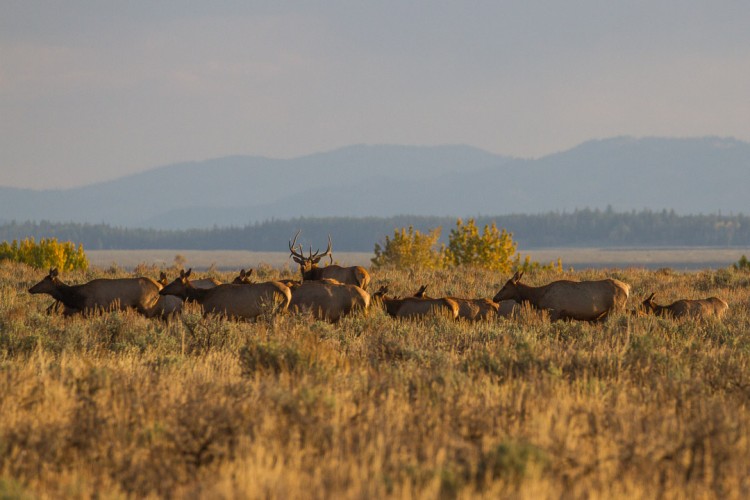
One shot and the 6x6 bull was down, my first bull elk. We packed the bull out several miles through wild country, heading west towards the Jackson Hole Valley, leaving the herd and unseen master bull to continue grazing, preparing for their fall migration through Grand Teton National Park and into the National Elk Refuge.
Today, the elk and pronghorn migrations protected by Jackson Hole National Monument, now Grand Teton National Park, aren’t at risk, but others are. Research by world renowned Conservation Biologist Joel Berger has found that upwards of 75% of wildlife migrations in Wyoming alone have been lost. That’s in the 10th largest state in the country, which also has the smallest population of less than 600,000 people.
With wild places shrinking all over the country now should be the time to rally for protecting what’s left but instead President Trump and Secretary of the Interior Ryan Zinke are reviewing some 27 National Monuments with the intention of shrinking or rescinding many of them.
Montana’s Upper Missouri River Breaks National Monument, home to the most viable elk herd in the state, along with a spectacular bighorn sheep herd, and mule deer and antelope populations, is under review. The elk migrations protected by Rio Grande del Norte National Monument in New Mexico are threatened, as are an array of stunning public landscapes across the country.
It isn’t just migrations at stake, National Monuments like Bears Ears in Southern Utah provide reservoirs of biodiversity, offering a glimpse into our wild past. Our best opportunity to preserve biodiversity in the long run lies in protecting large landscapes, or in the the case of Papahānaumokuākea, and the Pacific Remote Islands National Monuments, large waterscapes. These two National Monuments, both currently under review, are home to over 7000 marine species and over 14 million seabirds.
Nearly a quarter of our treasured National Parks, like Grand Teton National Park, start out as National Monuments. These wild places deserve protection before they are lost and forgotten. This summer, I’ve been sharing spectacular grizzly bear sightings with clients in northern Grand Teton National Park, near the shores of Jackson Lake. Had the monument been rescinded in the 1940s upwards of 400 summer homes may have been built along those shores. A sawmill may have been constructed near the park entrance at Moran Junction, cutting logs floated across the lake from the Northern Range of the Tetons.
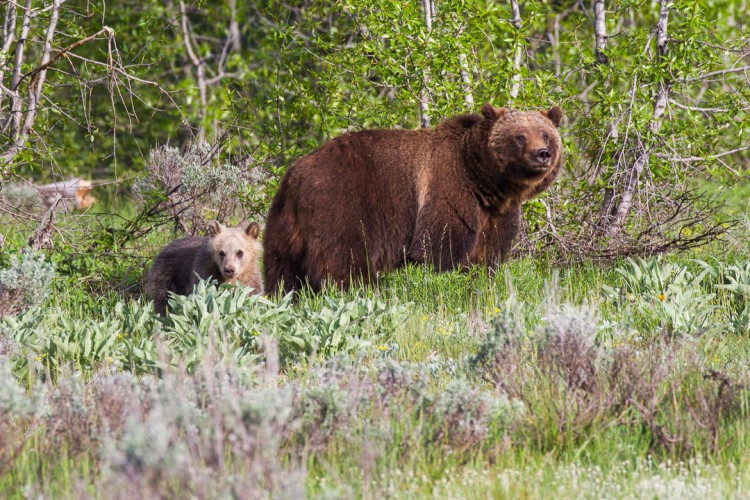
Would there still be space for the grizzly sow and cubs we watched playing in a field of yellow biscuit root, purple larkspur, and silvery lupine? What about those migrating elk heading north into Yellowstone? Would their ancient trails from hundreds of generations traveling across the landscape have been lost if Jackson Hole National Monument had been dissolved in the 1940s?
National Monuments have a clear track record of not just protecting wild places and the wild things within them but acting as sustainable economic drivers for local and regional economies. History it seems, has a way of repeating itself, and we are revisiting the same battle fought here in Jackson Hole over 70 years ago, but now over other treasured landscapes across the country.
Cliff Hansen realized the value of this valley was its preservation for future generations including his grandson, current Governor Matt Mead. We don’t have to let the lessons of Jackson Hole National Monument and Grand Teton National Park be forgotten. Today Secretary of the Interior Ryan Zinke will make recommendations to the President regarding our public lands, and our National Monuments. Let him know you support public lands by Texting 'DEFEND' to 52886 TODAY.
The persistence of these wild places depends on your voice, please add it today.
To learn more about joining a safari with Jackson Hole Ecotour Adventures visit our website or give us a call at (307) 690-9533. We hope to see you soon!
Photos and blog by Naturalist Josh Metten













